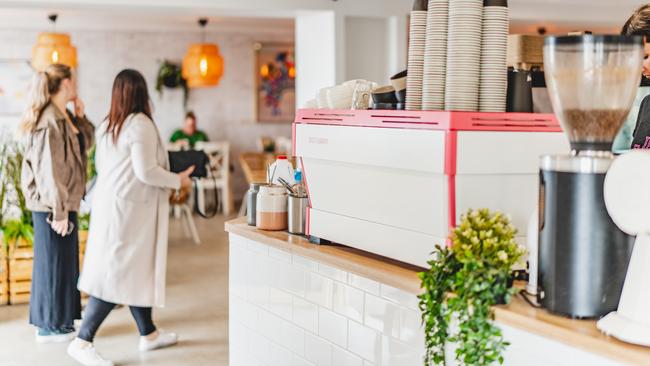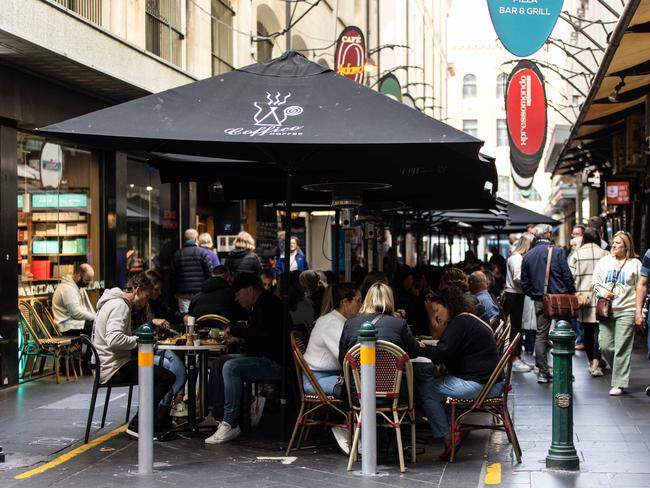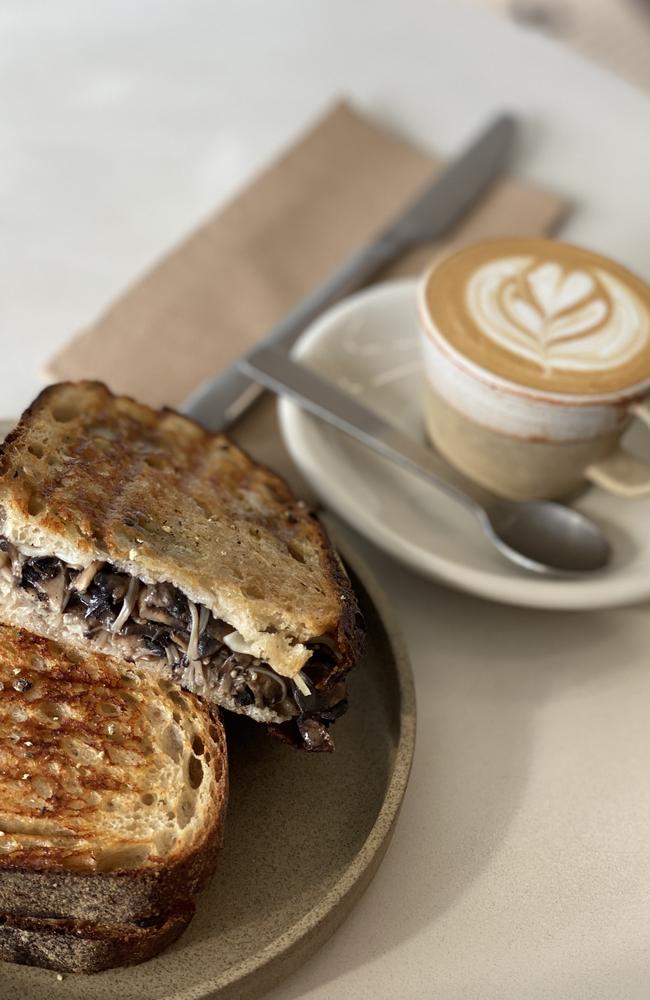‘Unviable’: Foodies warned to brace for price hikes when eating out
A hard working family has been pushed to the brink, and their struggle has a impact on all Australians and the lifestyle they now enjoy.
News
Don't miss out on the headlines from News. Followed categories will be added to My News.
Since opening seven years ago, Brad Pettitt’s cafe has become a beloved local fixture in the tight-knit community of Albion Park, near Wollongong, and most days the 65-seater is buzzing.
Despite its popularity and Mr Pettitt’s expansion into catering, functions and pop-up events, skyrocketing operating costs have pushed him to the brink.
Sharp increases to the cost of everything from insurance and electricity to the price of produce and stock have seen his profit margin shrink to a razor-thin five per cent.
Now, the owner of Three Flamingos Espresso is bracing for the latest financial hit – a 3.5 per cent hike to the minimum wage, announced on Tuesday by the Fair Work Commission.
“Our staff work really hard and they absolutely should be rewarded, but in the context of all these other huge cost increases, it’s really difficult to cope,” Mr Pettitt said.
“In the past two years, our electricity costs are up 40 per cent, gas 20 per cent, insurance and worker’s comp both 10 per cent, coffee recently went up 15 per cent, bacon is up 10 per cent, and eggs, of course, the big one, is 44 per cent.
“The wage increase is modest for a few employees, but we have a staff of 24 so it all adds up to a big additional expense.”


Millions of workers will see their hour rate lift to $24.95, a total of $948 per week based on 38 hours worked, up from $24.10 per hour and $915.90 per week.
The Australian Industry Group estimated that the increase will see the national wages bill rise by $5 billion over the coming financial year.
“We’re doing everything we can to diversify our income streams because we can’t rely on day to day trade,” Mr Pettitt said. “It’s just not viable anymore.”
He concedes an increase in menu prices is now inevitable – and he’s not alone.

Industry groups say the larger-than-anticipated minimum wage increase will hurt vulnerable businesses, especially those in hospitality, and consumers will ultimately pay.
As a result, the prices of everything from a pub meal to accommodation could rise as many business owners battle to cope with higher wages bills amid especially tough trading conditions.
The “viability” of hospitality businesses and even “the future of gastronomy” in Australia are at risk, Restaurant and Catering Association chief executive Suresh Manickam claimed.
A recent industry survey by the group found 80 per cent of businesses were already considering a hike in menu prices, Mr Manickam said.
“The decision will need to be closely monitored for its impact on the wage-price inflationary spiral,” he warned.
“This wage hike is purely unsustainable for operators, as we know any increase in minimum wages has repercussions beyond a business’ wage costs, and will lead to higher rates of unemployment and underemployment, and economic repercussions that impact the everyday consumer.”
Stephen Ferguson, national boss of the Australian Hotels Association, said the increase was “at the higher end of the scale” and above the current inflation rate.
“And it’s certainly higher than what business groups were hoping for,” Mr Ferguson said.
“No one begrudges anyone [receiving] a pay rise with the cost-of-living [crisis], but it is definitely an additional cost of business and will have an impact.”
The price a consumer pays is subject to a range of cost pressures faced by business operators, he said, adding: “Wages are a factor, as well as electricity, food costs, insurances, and so on.”

The FWC decision comes as the national economy “muddles through” the lowest period of growth since the recession in the early 1990s, Australian Industry Group chief executive Innes Willox said.
“Business margins are falling, private sector employment and investment is weak, while productivity is barely moving … [and] uncertainty arising from global tariffs and turmoil is also beginning to weigh on the outlook,” Mr Willox said.
“While we supported a moderate increase in real award wages reflecting cost of living concerns, 3.5 per cent combined with the additional 0.5 per cent superannuation costs employers will face from next month is well beyond what current economic conditions can safely sustain.
“Its effects will fall hardest on industries such as retail, manufacturing, and accommodation and food, which are already struggling with very weak business conditions.”

The painful combination of the cost-of-living crisis forcing consumers to pinch pennies and soaring business costs had seen revenue fall, Mr Pettitt said.
Forced menu price rises had dealt a further blow, with a fall in volumes wiping out most of the gains, he added.
“There’s only so much people can pay and it gets to point where many will just cut back,” he said. “We’ve seen it with coffee, where we used to 60 to 65 kilos a week, but now we’re down to 50 to 55 kilos.
“You see a lot of small businesses closing and it’s not hard to understand why. If you sit down and look at the numbers, it doesn’t just doesn’t sense. For us, it’s a labour of love.”
The number of companies entering insolvency has “risen sharply” over recent years, according to the Reserve Bank of Australia, and more than three-quarters of those are small businesses.

In another clear sign of the pressure facing business operators, AMP chief economist Shane Oliver enterprise investment as a proportion of the overall economy is at its lowest level in four decades.
“Business investment fell slightly in the March quarter, with pretty weak plans for the year ahead,” Mr Oliver said.
“Private new capital expenditure fell 0.1 per cent against expectations for a 0.5 per cent gain. What’s more, investment plans for 2025-26 were just 0.7 per cent higher than the same plans a year ago for 2024-25, suggesting pretty soft business investment growth in the year ahead.”
Mr Oliver also pointed out that retail sales fell in April, showing consumers are still struggling with cost-of-living pressures and spending less as a result, hurting businesses’ bottom lines.
Small businesses are the largest private sector employee in the country and many are struggling to turn a profit in the current economic climate, advocates say.
A costs crisis driven by higher rents, insurance premiums, energy bills and other input expenses have left “razor thin margins”, Council of Small Business Organisations Australia chief executive Luke Achterstraat said.
“For every dollar increase in the award rate, employers also face higher levels of workers compensation, payroll tax and, of course, another legislated increase in the superannuation guarantee from July 1,” Mr Achterstraat said.
While consumer prices will likely increase, there’s only so much of the additional burden businesses can pass on, he said.
“This decision will affect more than 100 different industry awards and a multitude of different role classifications. Many owners will need to personally absorb these higher costs, unable to pass on any further price rises to consumers.”

And more pressure for businesses is likely, with Professor John Buchanan from the University of Sydney Business School tipping the FWC’s next boost likely to be even bigger, Professor John
For one, the commission flagged a potential phasing out of same of the lowest wage classifications in the future.
“In this way it does not have to ‘increase rates’ for low paid classifications as such,” Professor Buchanan wrote in analysis for The Conversation.
“Rather, it just eliminates the possibility of having rates for exceptionally low paid jobs – and so raises the base rates dramatically for the lowest paid workers.”
Secondly, the decision marks a “break with the recent habit” of using low paid workers as a “shock absorber” for macroeconomic policy, he added.
“The 3.5 per cent rise is a modest increase but an important one. More important is the framework the commission has set up for decisions in future years.
“Devising a more accurate measure of real wage cuts and noting the importance of abolishing whole classifications of low paid work lays the foundations for potentially very exciting developments in Australian wages policy in coming years.”
Originally published as ‘Unviable’: Foodies warned to brace for price hikes when eating out





